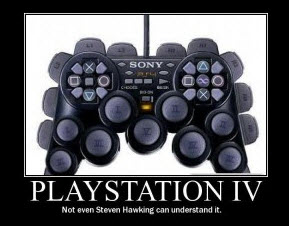 Sony dropped a hint today that it is working on a PlayStation 4 video game console even as Nintendo prepares to announce the Wii 2 at the E3 trade show on June 7.
Sony dropped a hint today that it is working on a PlayStation 4 video game console even as Nintendo prepares to announce the Wii 2 at the E3 trade show on June 7.
The PlayStation 3, which debuted in 2006, still has a lot of life left in it. But Sony has begun incurring increases in research and development costs. That means that we’re getting closer to the introduction of new game systems for the Big Three of video games — a transition time when billions of dollars are at stake and big market share shifts can happen.
Sony chief financial officer Masaru Kato said on the company’s earnings call, “For the home equipment the PS3 still has a product life, but this is a platform business, so for the future platform — when we’ll be introducing what product I cannot discuss that — but our development work is already underway, so the costs are incurred there.”
Sony has said it foresess a 10-year life span for the PS 3, and the company is not expected to say much about the PS 4 at its press conference at E3 on June 6. Nintendo, on the other hand, has said it plans to introduce a next-generation game console in 2012. Microsoft, whose Xbox 360 was introduced in 2005, hasn’t said if it will launch a new console or is working on one. All of the console makers want to postpone the introduction of a new console as long as possible so they can amortize the huge development costs over a longer period and reap more sales from games in each generation, but they generally introduce a new console when the older models start to see declining sales.
In some respects, a new console is always in development. But the important difference here is that Sony is incurring rising R&D costs. That means it may be in development on some chips, which are difficult to design and prototype and often carry big price tags during the R&D and early manufacturing stage.
For the fiscal year, the overall Sony Corp. reported sales at 7.18 trillion yen, or $86.5 billion, down slightly from $88.7 billion a year earlier. Operating income was $2.4 billion, up five-fold from $390 million a year ago. But net losses were $3.1 billion, compared to a loss of $501.3 million a year ago, mainly because of Japan quake-related impacts and accounting changes.
Sony’s Networked Products & Services division, which includes the PlayStation game business, saw an improvement. Sales were $19 billion, up 0.4 percent from a year ago. But profit was $429 million, compared with a loss of $1.02 billion a year earlier. Sony credited the game business for the turnaround.
During the fiscal year ended March 31, Sony sold 14.3 million PS 3s, up from 13 million a year earlier. Software sales were 147.9 million units, up from 115.6 million a year ago. The PlayStation Portable sold 8 million, down 1.9 million units from a year ago. Software sales were 46.6 million, up 2.2 million units. The PS 2 sold 6.4 million units, and software sales were 16.4 million units, down from 35.7 million units a year earlier.
Sony expects to sell 15 million units of the PS 3 in the new fiscal year. It plans on selling 6 million PSPs and 4 million PS 2s. Sony made no forecast for sales of its upcoming portable NGP gaming system. The PSN hacker attack is expected to take a toll on earnings in some way. Total sales are expected to be $92.1 billion for the coming year.
[picture credit: edesigninspiration]
VentureBeat's mission is to be a digital town square for technical decision-makers to gain knowledge about transformative enterprise technology and transact. Learn More
